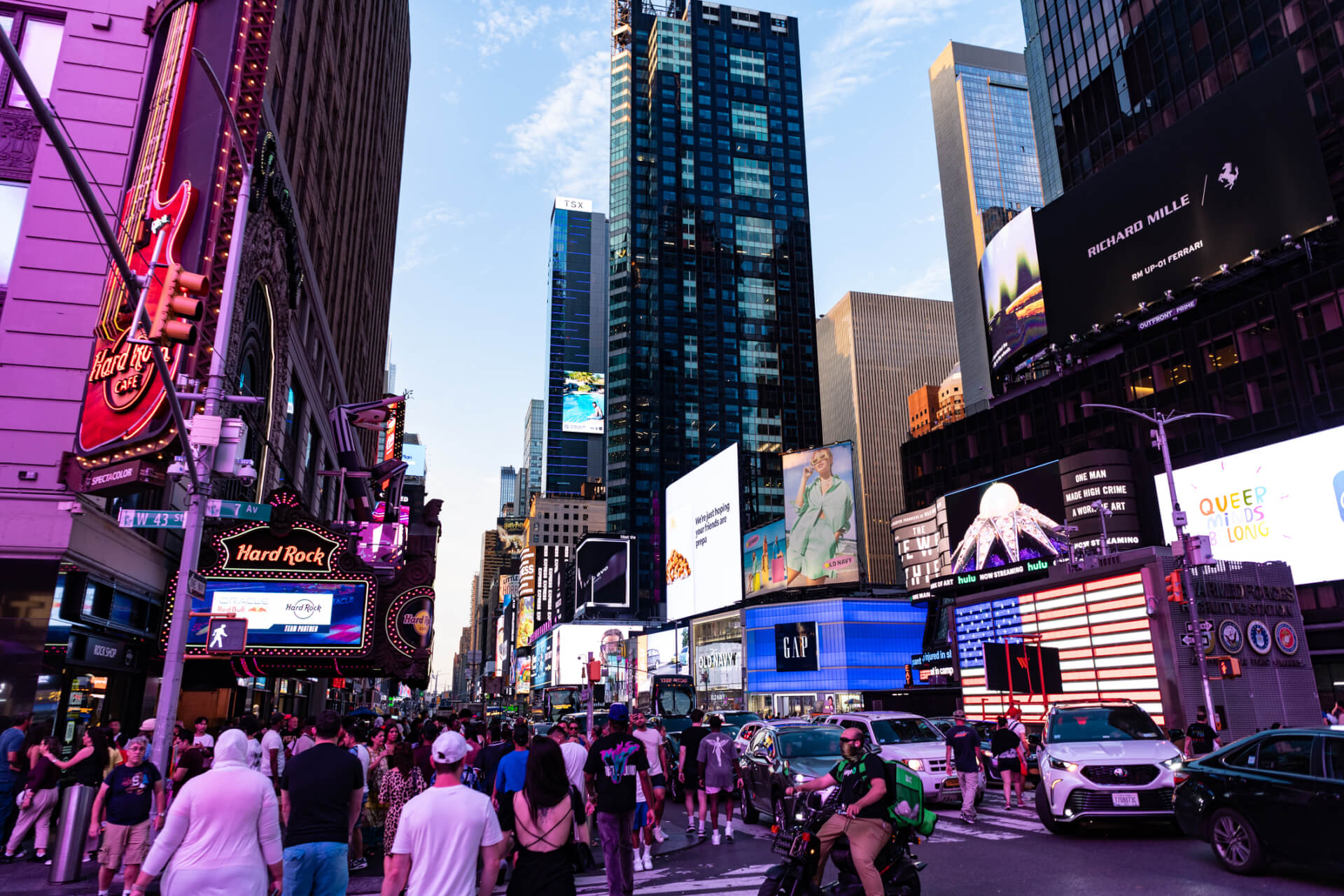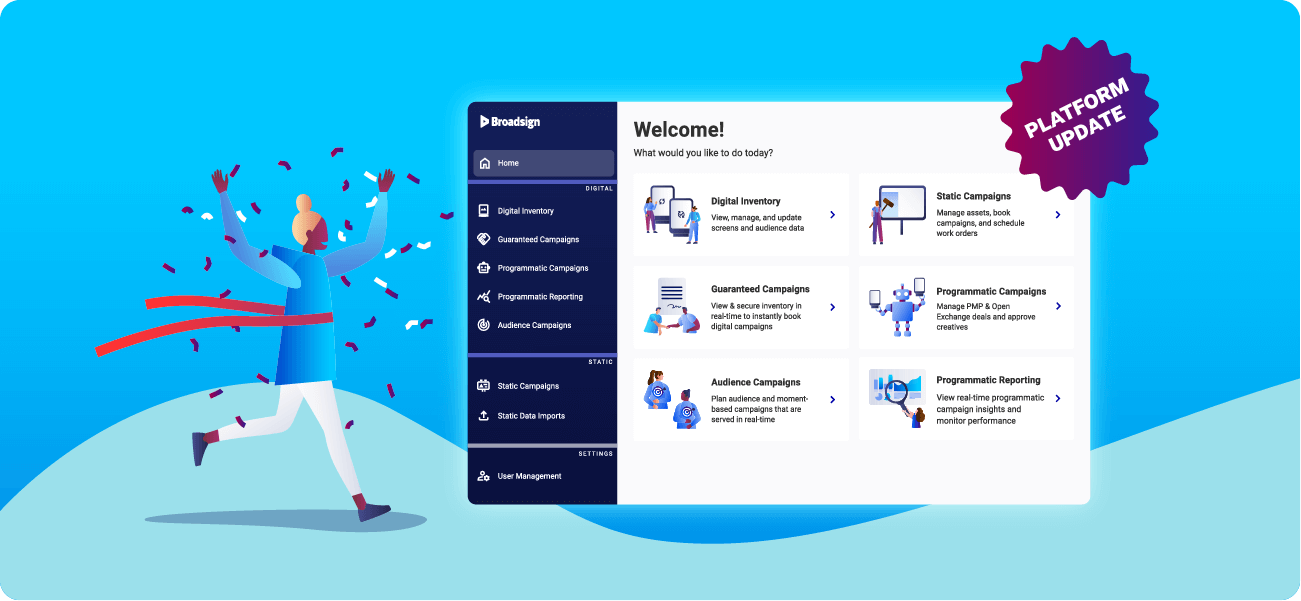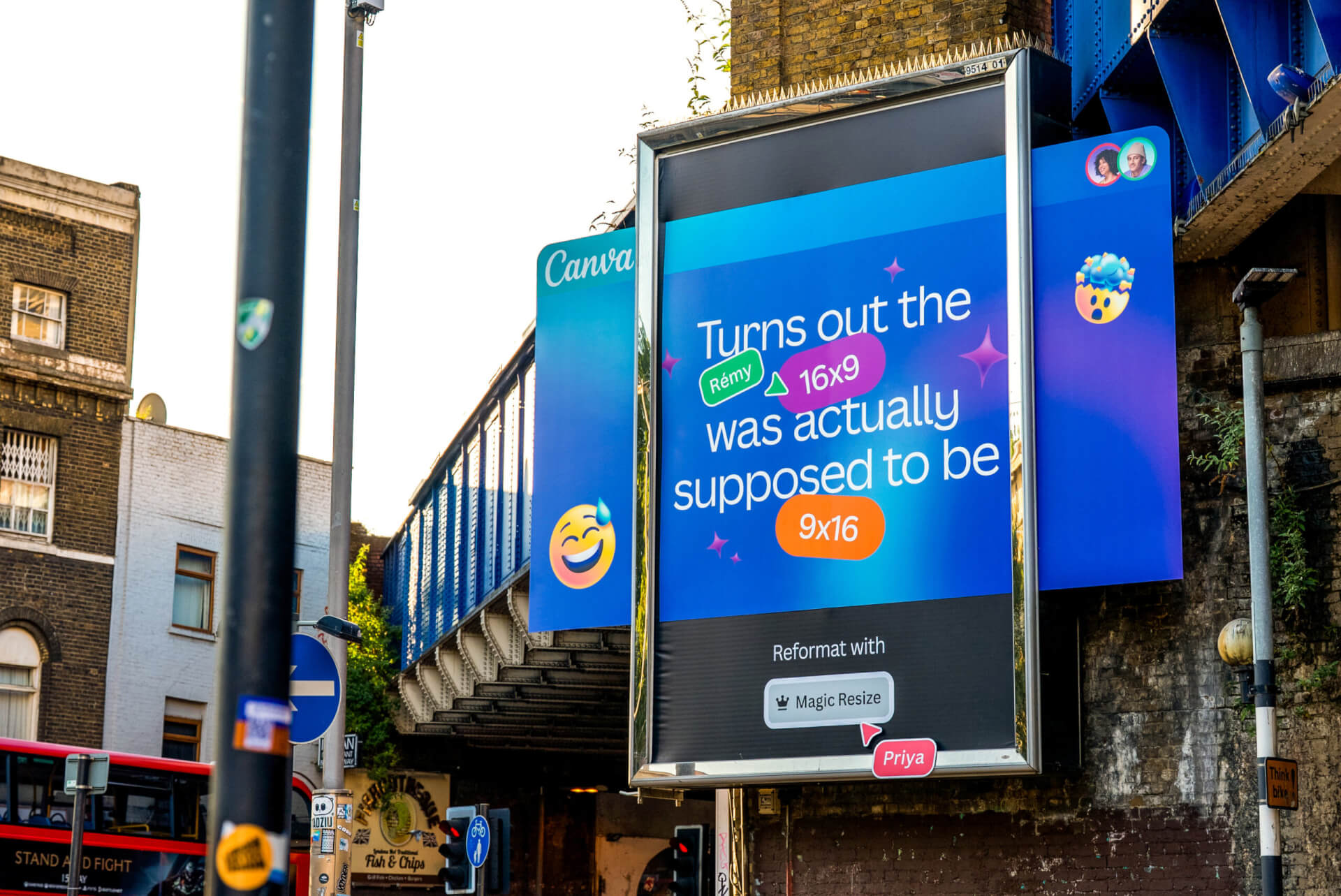| October 11, 2021
What is digital out-of-home (DOOH) media? Definition, examples & key advantages
Digital out-of-home (DOOH) is an innovative form of out-of-home (OOH) advertising. It allows brands to connect with consumers as they go about their daily lives via digital screens in high-traffic public spaces, delivering contextually relevant content to targeted audiences at scale.
DOOH is fast becoming a core part of the media marketer’s toolkit, with programmatic trading and automation-enabled OOH media planning helping to further fuel advertiser interest and investment in the channel. While nearly two-thirds of OOH spending still goes toward traditional static formats, digital OOH is forecast to represent 43.9% of total OOH revenue by 2030, reaching $31.4 billion.
Below, we break down the fundamentals of DOOH advertising, from its differences from traditional OOH to where it appears and the advantages it offers advertisers, along with real-world examples in action.
Jump to:
- What is DOOH advertising?
- Common DOOH formats & screen types
- Benefits of DOOH advertising
- Real-world examples of DOOH in action
- DOOH FAQs
What is DOOH advertising?
DOOH, which stands for digital out-of-home, refers to advertising media displayed on digital screens strategically placed in shared environments outside the home.
Unlike traditional OOH, which relies on fixed creative displayed for defined periods of time, DOOH supports dynamic messaging that can be updated, scheduled, and adapted more efficiently. Advertisers can align creative with specific moments, locations, audiences, or campaign objectives, making it easier to keep messaging timely and consistent across placements.
For advertisers and marketers, DOOH plays a strategic role in connecting digital media planning with real-world presence. It’s commonly used alongside online, mobile, and social channels to extend reach, reinforce messaging, and support omnichannel marketing strategies — without relying on third-party cookies or personal identifiers.

OOH vs. DOOH: Understanding the difference
Out-of-home (OOH) advertising includes all media formats designed to reach people outside their homes, from roadside billboards to transit posters to place-based media. Traditionally, OOH has relied on printed creative displayed for set periods of time, delivering high-impact static imagery perfect for spreading awareness to a large audience for a relatively low cost-per-impression.
DOOH builds on this foundation by introducing digital screens and software-enabled delivery. Rather than replacing traditional OOH, digital OOH expands what advertisers can do with the channel by enabling greater flexibility and more control over when and where creative runs. This makes it easier to align messaging with specific moments, locations, audiences, or campaign objectives while retaining the real-world visibility that defines OOH.
At a high level, the distinction between OOH and DOOH comes down to how creative is delivered, updated, and managed throughout a campaign.
Key differences between OOH and DOOH
Traditional OOH:
- Static creative displayed for fixed periods
- Manual creative changes
- Limited flexibility once live
- Broad, sustained exposure
- Primarily awareness-focused
Digital OOH (DOOH):
- Dynamic digital creative that can be scheduled or updated over time
- Remote, software-enabled updates
- Greater agility during a campaign
- Broad exposure with the ability to target when and where messages appear
- Supports awareness alongside other campaign objectives
Common DOOH formats & screen types
Digital out-of-home shows up across more of daily life than people often realize — from major roads and city centres to stores, transit hubs, and places people return to week after week. Different screen types tend to play different roles, depending on where they appear and how people encounter them.
Large-format digital billboards and spectaculars
Large-format DOOH includes roadside digital billboards, highway screens, and large-scale city-centre displays often referred to as spectaculars. These screens are typically placed along major routes and in busy urban areas, where they’re visible to drivers, commuters, and pedestrians throughout the day.
Often used for:
- Brand launches and tentpole campaigns
- Broad reach and sustained visibility
- City-wide or regional presence
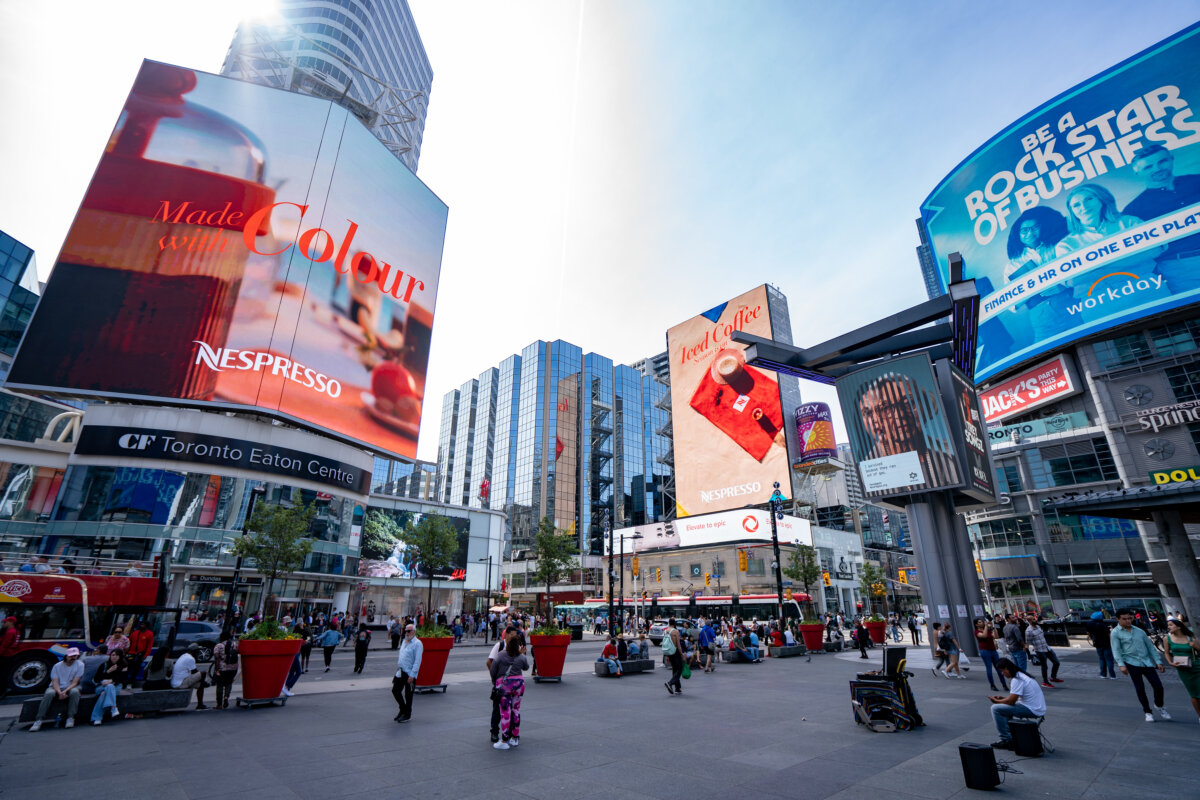
Retail and point-of-purchase DOOH
Retail and point-of-purchase DOOH includes screens placed in and around shopping environments, from aisle and shelf displays to menu boards, checkout screens, and digital posters in grocery and convenience stores. These formats reach shoppers close to the moment of decision, when intent is already high.
Often used for:
- Promotions and offers
- New product launches
- Retail media and co-branded campaigns
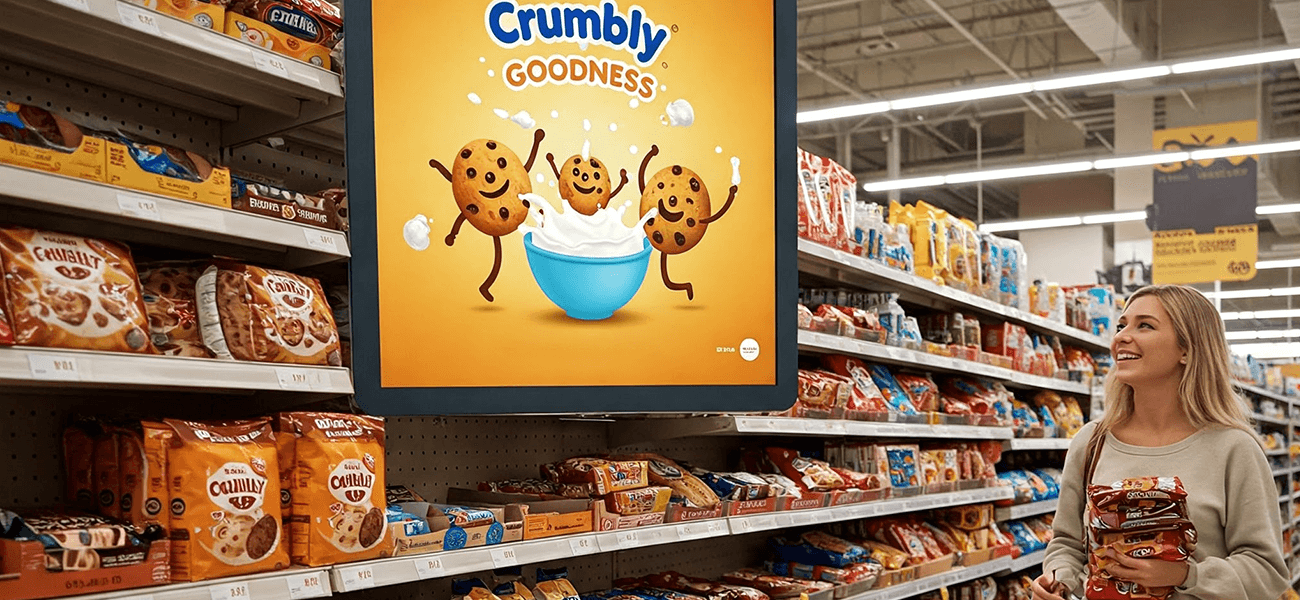
READ ALSO: Why in-store signage advertising belongs in every brand’s retail media strategy
Transit and travel DOOH
Transit and travel DOOH spans environments like airports, train and subway stations, bus terminals, onboard transit screens, and rideshare or taxi placements. Many of these settings involve repeat exposure or longer dwell times.
Often used for:
- Travel-related offers and destinations
- City-specific or location-based messaging
- High-frequency commuter campaigns
READ ALSO: Why travel marketers are turning to OOH for scalable reach and ROI
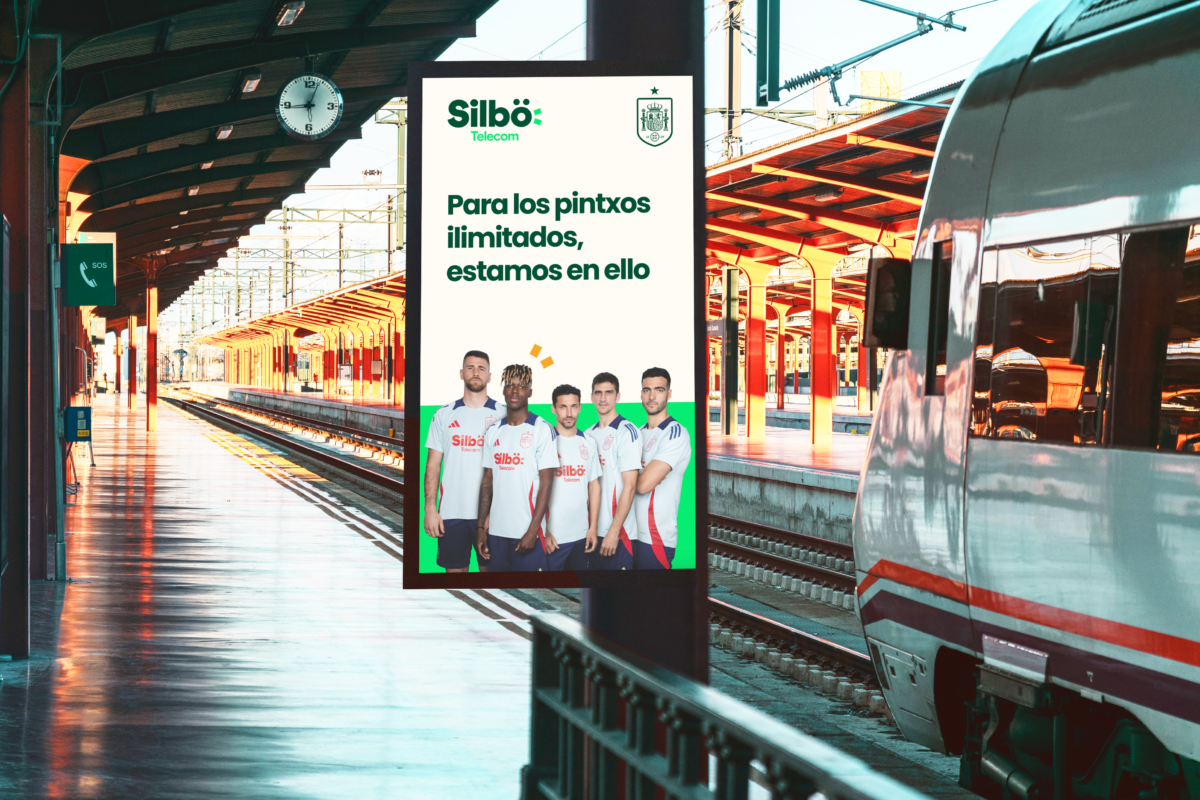
Place-based DOOH screens
Place-based DOOH refers to screens located within specific venues, such as offices, gyms, healthcare settings, campuses, and entertainment venues. What defines these networks is the environment they appear in and the mindset that comes with it.
Messaging can reflect where people are and what they’re doing, making place-based formats well-suited to situations where context adds relevance.
Often used for:
- Contextual or lifestyle messaging
- Reaching audiences during routine or dwell time
- Reinforcing relevance through environment
Benefits of DOOH advertising
Digital out-of-home offers clear advantages for agencies and brand marketers looking to meaningfully connect with screen-weary consumers in the context of their daily routines.
High-impact visibility & consumer favourability
Digital screens command attention in public environments, reaching people during everyday moments like commuting and shopping trips without feeling intrusive. According to a study by the Out of Home Advertising Association of America (OAAA), 73% of U.S. consumers view DOOH ads favourably — significantly surpassing other forms of ad media like television (50%), social media (48%), online (37%), and print (31%).
Plus, like all forms of outdoor advertising, it’s unskippable and adblock-proof, with new research from Solomon Partners finding that both printed and digital OOH formats drive the highest consumer ad recall among major media channels.
Flexible activations & creative updates
Because DOOH is delivered digitally, advertisers can launch, adjust, or refresh creative more quickly than with printed formats, making it easier to test and refine campaigns over time. This kind of flexibility is often enabled through programmatic DOOH (pDOOH), which allows advertisers to adjust campaigns and creative in real time using familiar digital buying tools.
READ ALSO: 3 common friction points in OOH media planning (and how automation helps solve them)
Dynamic, contextually relevant content
Unlike traditional OOH, which is static, DOOH creative doesn’t need to remain fixed for the duration of a campaign. Digital signage supports dynamic creative formats that can be updated in real time to align with the moment in which messaging appears.
This contextual approach helps campaigns feel timely and situational rather than one-size-fits-all. A study by JCDecaux UK found that DOOH campaigns using contextually relevant messaging increased viewing time, improved consumer ad recall, and delivered a +16% increase in sales.
READ ALSO: Understanding dynamic creative optimization in out-of-home
Privacy-safe advanced targeting capabilities
DOOH supports precise and flexible targeting, allowing advertisers to cast a wide net or focus on highly specific environments, moments, or target audiences. Campaigns can be tailored based on factors like location, time of day, and proximity to points of interest — without relying on personal identifiers.
Instead, DOOH uses first-party data integrations and real-time environmental signals, such as weather conditions and nearby local events, to inform ad delivery. This privacy-first approach makes DOOH a strong option for brands looking to maintain relevance as the industry continues to move away from third-party cookies.
READ ALSO: How data is helping to deliver personalized digital out-of-home advertising
Measurable engagement & real-world action
DOOH doesn’t just capture attention or build awareness — it also influences what people do next. According to a survey by The Harris Poll and the Out of Home Advertising Association of America (OAAA), 76% of U.S. consumers reported taking some form of action after seeing a DOOH ad.
These actions ranged from watching a video (38%) or visiting a nearby restaurant (36%) to going into a store (29%), making an in-store purchase (30%), or talking about the brand with someone they know (30%).
Omnichannel amplification
DOOH works alongside social media, mobile advertising, and other digital channels to reinforce messaging across both physical and digital touchpoints, supporting more cohesive campaigns.
By combining real-world presence with digital creative, DOOH gives marketers more opportunities to influence people throughout the customer journey — from awareness to action — turning brief moments of attention into visits, conversations, and, ultimately, measurable outcomes.
READ ALSO: Maximizing omnichannel impact with programmatic DOOH: Agency insights from Adsmurai
Examples of DOOH advertising in action
Looking for inspiration? Here are a few DOOH advertising examples that show how brands are using DOOH in real-world environments to drive awareness, influence consideration, and deliver measurable results. Explore our full case study catalogue for more success stories.
HP: Driving brand and sales impact with programmatic DOOH in Dubai
HP set out to increase awareness, strengthen brand perception, and drive purchase consideration for its Smart Tank printer series in Dubai, one of the UAE’s highest-value media markets. Partnering with Broadsign, the brand launched a programmatic DOOH campaign reaching parents aged 25–54 — households with children, the Smart Tank’s core audience — through high-frequency exposure on premium digital screens in shopping malls, transit hubs, and other family-oriented environments.
The results: a 12% year-over-year sales lift, a 42% increase in purchase consideration for the Smart Tank 585, and a 2× lift in positive brand image among exposed audiences. Read the full HP case study.
Decathlon: Driving in-store foot traffic with near-store DOOH
Decathlon, a global sporting goods retailer, wanted to increase store visits by reaching consumers closer to decision-making moments. Working with Talon NL, the brand launched a programmatic DOOH campaign using Broadsign’s OutMoove DSP, activating screens located near and along routes to its retail locations.
By aligning DOOH placements with shopper movement and proximity to stores, the campaign helped influence in-the-moment behaviour at key points along the path to purchase.
Read the full Decathlon case study to learn how near-store DOOH helped drive a 46% increase in footfall across targeted locations.
Visit Arizona: A 30% increase in arrivals with programmatic DOOH
Visit Arizona, the official tourism board, launched a nationwide programmatic digital out-of-home campaign to inspire travel planning and engage high-intent audiences at every stage—from awareness to booking. The strategy paired high-traffic DOOH placements with mobile retargeting and an arrival lift study to measure real-world impact. The campaign achieved strong mobile engagement and delivered a 30% lift in arrivals, outperforming the national average for similar efforts. Read the full case study to learn more.
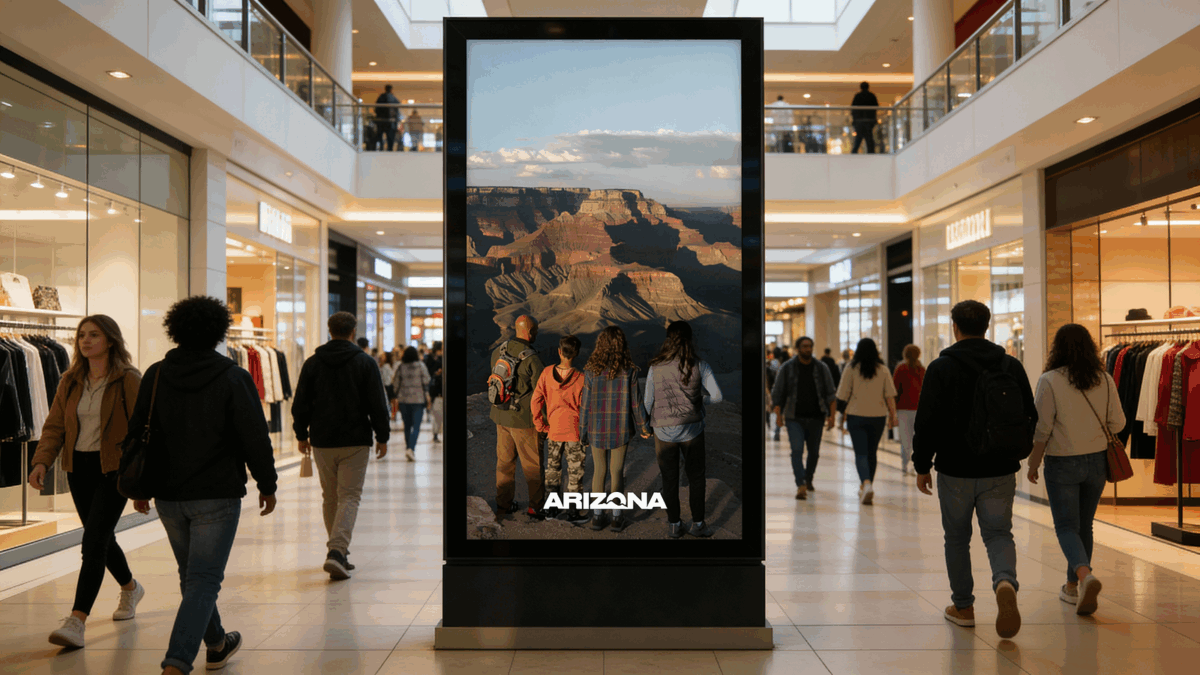
FAQs about DOOH advertising
Is DOOH the same as digital signage?
No — while the two are related, they aren’t the same thing. Digital signage refers to the screen technology itself, whereas DOOH is an advertising channel that uses those screens to deliver paid media campaigns.
In other words, digital signage is the infrastructure; DOOH is how advertisers use that infrastructure to reach audiences outside the home.
Is DOOH advertising privacy-safe?
Yes. DOOH advertising is widely considered privacy-safe because it does not rely on personal identifiers or individual-level tracking. Instead, campaigns are typically planned and activated using aggregated, contextual signals such as location, time of day, environment, or audience movement patterns.
This approach allows advertisers to stay relevant without collecting or storing personal data, aligning DOOH with evolving privacy expectations and regulations.
How much does DOOH advertising cost?
There’s no single price for DOOH advertising. Costs can vary based on factors such as screen format, location, audience reach, time of day, campaign duration, and whether inventory is purchased directly or programmatically.
For brands new to out-of-home, understanding how pricing works across different formats can be helpful. This is similar to how traditional out-of-home pricing is often explained when advertisers ask how much a billboard costs — with variables tied to placement, demand, and scale rather than a fixed rate.
